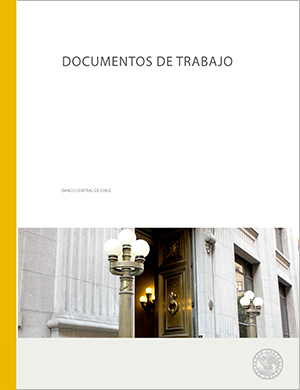Working Papers Nº 451: Asymmetric Monetary Policy Rules and the Achievement of the Inflation Target: The Case of Chile
Publications
Working Papers Nº 451: Asymmetric Monetary Policy Rules and the Achievement of the Inflation Target: The Case of Chile
Autor: Fabián Gredig
Description
The purpose of this paper is to test empirically whether the Central Bank of Chile (CBC) has a monetary policy reaction that changes depending on the actual state of the economy. For that, we estimate a threshold model for the CBC’s policy rule that allows the existence of two policy regimes according to whether the output gap, the inflation deviation or the GDP growth is above or below a threshold value. Also, we assess the possible effects of estimated monetary policy rules in the achievement of the inflation target by simulating a standard New Keynesian Model with endogenous switching parameters. Estimations show that the monetary authority responds strongly to inflation deviations but weakly to the output gap when the gap is larger than a specific threshold value. Furthermore, there is statistical evidence that the CBC reacts faster moving the interest rate under expansion periods. These results are robust when assuming an unknown threshold value and to real-time estimation. Simulations reveal that the estimated monetary policy rule may induce an asymmetric behavior in the inflation rate and a small negative inflation bias.
Working Papers Nº 451: Asymmetric Monetary Policy Rules and the Achievement of the Inflation Target: The Case of Chile
Boxes and graphics

